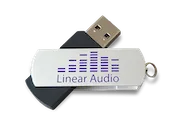They are many passive x-over designers and users of these designs here and some of them have also used digital x-over eg. DCX2496 as well.
The designer can design filter to shape the curve to fit the speaker curve in a very flexible way.,eg. asymmetrical, 1st order, 2nd, LR, Butterworth, etc. The digital x-over is less flexible but still it can be configure in variety of ways, eg.,asymmetrical, etc.to fit ones needs.
The digital x-over allows users to forces the audio chain to be in the digital domain throughout until it reaches the analogue amplifier(if you are using one).
I don't have that much experience with designing and experimenting with passive x-over, but I have started to use a digital x-over. I like the latter. The latter saves me money by not having cupboard full of expensive capacitors and inductors that I won't be using and I find hard to sell after using them.
my query is that those who has experience with using both methods please explain your experience eg which one do you like, etc. I am sure many here would find it useful, I for one would like to listen to those who have used passive components extensively.
cheers.
The designer can design filter to shape the curve to fit the speaker curve in a very flexible way.,eg. asymmetrical, 1st order, 2nd, LR, Butterworth, etc. The digital x-over is less flexible but still it can be configure in variety of ways, eg.,asymmetrical, etc.to fit ones needs.
The digital x-over allows users to forces the audio chain to be in the digital domain throughout until it reaches the analogue amplifier(if you are using one).
I don't have that much experience with designing and experimenting with passive x-over, but I have started to use a digital x-over. I like the latter. The latter saves me money by not having cupboard full of expensive capacitors and inductors that I won't be using and I find hard to sell after using them.
my query is that those who has experience with using both methods please explain your experience eg which one do you like, etc. I am sure many here would find it useful, I for one would like to listen to those who have used passive components extensively.
cheers.


 A sub IS generally best crossed in actively though, where you're tuning the room as part of the system, and every new room is a different tuning. Also, low level detail is generally not in this range. Not to mention that the component size and cost to cross at 40 or 50Hz passively is... silly.
A sub IS generally best crossed in actively though, where you're tuning the room as part of the system, and every new room is a different tuning. Also, low level detail is generally not in this range. Not to mention that the component size and cost to cross at 40 or 50Hz passively is... silly.

Comment